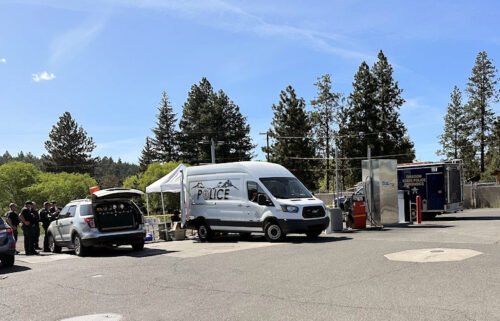DMV warns of Sandy flood-damaged vehicles

An estimated 230,000 vehicles suffered damage from flooding in the Northeast as a result of Hurricane Sandy and the Nor’easter storm associated with it. That may be thousands of miles away, but even Oregonians shopping for a vehicle need to beware, Oregon DMV warned Monday.
“Unscrupulous individuals may try to prey on consumers looking for a bargain,” said Chris Ratliff, manager of the DMV Business Regulation Section. “Any time a deal sounds too good to be true, it usually is. That’s particularly true of cars.”
Based on experiences with flood-damaged vehicles associated with Hurricane Katrina in 2005, it is very likely that many states soon will begin to see flood-damaged vehicles enter their used-vehicle markets for sale.
People shopping for used vehicles always need to be cautious. In addition to inspecting vehicles thoroughly and opting to have a professional mechanic inspect it, car buyers can use other consumer protection tools and resources.
The National Motor Vehicle Title Information System (NMVTIS) is designed to protect prospective purchasers of vehicles from concealed vehicle histories. The NMVTIS Junk, Salvage and Insurance Total Loss program is now in place, and insurance companies are required, by federal law, to report to NMVTIS any vehicle that they deemed to be a total loss.
However, the reports to NMVTIS are on a 30-day cycle, so it is possible that flood-damaged vehicles may appear on the market and a NMVTIS check may not show a report from an insurer.
“It is possible to transport a vehicle across the country with a title that has not been updated with a ‘flood,’ ‘totaled,’ ‘junk,’ ‘salvage’ or other title brands to indicate damage,” DMV Administrator Tom McClellan said. “Car buyers need to be especially wary of vehicles with out-of-state titles, especially those from the East Coast with ownership documents other than a vehicle title.”
The American Association of Motor Vehicle Administrators is working with the National Insurance Crime Bureau (NICB) to gain access to information about vehicles reported by insurance companies as affected by the flood.
The NICB says progress is being made in identifying and removing thousands of vehicles damaged beyond repair by Sandy. Many of those vehicles were flooded and are being towed to holding areas where they will be loaded on car haulers and taken to facilities to be crushed.
Here are some links with useful information:
* https://www.nicb.org/newsroom/news-releases/sandy-vehicles-update.
* http://www.vehiclehistory.gov
* https://www.bja.gov/Programs/FloodDamagedVehicles_NMVTIS.pdf
* www.nsvrp.org
There is no guaranteed way to avoid buying a damaged car, yet Oregonians shopping for a used car during the next several months can reduce their risks by taking a few precautions:
* Inspect the vehicle. Look for signs of water, mud, sand, corrosion or residue in carpet, upholstery, glove box, inside the dash if that’s easy to examine, inside tail light fixtures, etc.
* Hire a professional mechanic to inspect a vehicle before purchase.
* Ask for the Vehicle Identification Number and check the VIN at http://www.vehiclehistory.gov, www.nicb.org or against online services such as Carfax or Experian. Or ask your auto insurance agent to check a VIN.
* Ask the seller to show you the title and check for title brands such as “salvage” or “flooded.”
* Shop for a used vehicle among licensed auto dealers, who are as eager to avoid damaged cars as consumers are. Oregonians can find out whether a dealer is licensed by visiting the Business section of www.OregonDMV.com.
Car buyers who later discover that the seller did not disclose information about the condition of a vehicle, such as flood damage, may find it difficult to get their money refunded. They might need to hire a lawyer. Consumers also may download a fraud report form at the Oregon Department of Justice at www.doj.state.or.us or www.oregon.gov/DOJ .
Consumers often wonder why a little water is such a big problem for vehicles. But submersion in water does severe damage, particularly when water enters the passenger compartment:
* Water and electronics don’t mix. Modern vehicles are full of electronics that control the engine, transmission, emission control devices, dash board, warning lights, external lights and entertainment systems. These chips may be located inside the dash or even under the seats. Failure of a single chip’s function could result in severe damage to the engine.
* No more new-car smell. Cleaning carpets and seats may improve the appearance of a flooded car’s interior, but mold and residues may remain.
* Salt is corrosive to metal. The effects of salt corrosion may take time to show up as failures in electronic systems and engine components.



